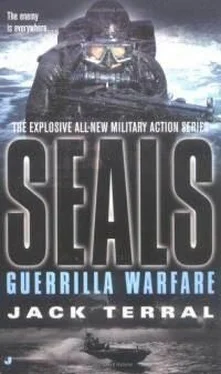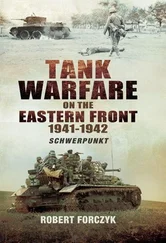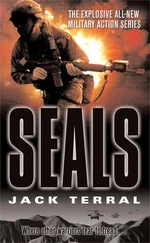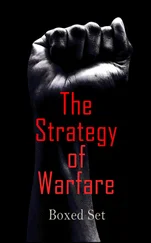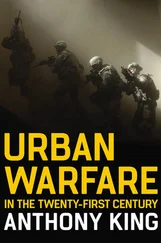The SEALs gathered together, going to each of the three corpses to check them for possible intelligence. But none bore documents of any kind, not even I. D. cards or tags.
Chad Murchison looked carefully at the second man Redhawk had killed. "I say! This fellow is rather mature, is he not?"
"All three of 'em are," Frank Gomez said. "Do you remember what they told us in Isolation? These guys are all noncommissioned officers and officers. They're veterans."
Brannigan checked the eastern horizon with his binoculars. "There could be more of them coming this way." He lowered the viewing device. "Redhawk, we'll head back to the cache. Follow a different azimuth than the one we used to get out here."
"Aye, sir!"
The patrol fell back into its march formation as the Native American took the lead.
.
ABOVE THE SAVANNAH
18 DECEMBER
0500 HOURS LOCAL
CORON EL Francisco Martinez sat in the copilot's seat of the old H-34 transport helicopter. He was the commander of the western sector of the Policia Fronterizathe Border Police--and his men had nicknamed him El Garron--the Big Claw--after a well-known Bolivian wrestler who was always the bad guy in his matches.
Two more helicopters followed the colonel's, and both were filled with eight heavily armed policemen. They had traveled from their usual post on the Bolivian-Brazilian border to take care of a matter involving some squatters. The orders had come down outside of normal police-channels, and as far as Coronel Martinez was concerned, that was a carte blanche to handle the situation any way he wanted.
And El Garron hated people of African ancestry.
When the choppers came in, each took a side of the village in a triangular formation. The well-trained policemen quickly leaped from the aircraft and formed up in skirmish lines, their Uzi 9-millimeter submachine guns h fully loaded thirty-round magazines. Each agent also had four more attached to his shoulder harness.
El Garron knew the noise of the incoming helicopters would have awakened all the residents of the tiny community, and he strode toward the thatched huts to find the headman.
Joao Cabecinho walked out into the countryside from the village. His people, who had stumbled out of their residences, stood around in a collective feeling of dread. The sight of armed police was a sure sign of immediate misery and disappointment in their lives.
El Garron stood with legs spread and his arms folded across his chest as he waited for the village chief to come up to him. The police officer sneered down at the small black man. "Born dia, preto," he said in Portuguese.
Cabecinho knew there was nothing to gain with defiance. He noted the three stars on the rank patch held to the Bolivian's jacket by Velcro. "Good morning, Coronel. How may I serve you?"
"You may serve me by directing everyone who lives in your village to go out on the opposite side from here," El Garron said. "One of my men will be waiting to direct you to the exact spot."
Cabecinho, with no choice but to obey, turned to his people, passing on the instructions in a low, sad tone of voice. This was the one thing they dreaded would happen from the first day they arrived on the Gran Chaco. All hope was gone now. The people moved slowly and hesitantly until the policemen charged in, shouting and gesturing angrily.
Ten minutes later the entire population of a hundred men, women and children stood close together some twenty meters from the village limits. The disappointment and frustration showed plainly on their faces as the knowledge their plans and hard work for starting a new life in the Gran Chaco had come to an end.
El Garron checked the positions of his men, gesturing to move a squad a little closer. When all was ready, he allowed himself almost a full minute before getting down to business. After a deep breath, he bellowed out the order.
"Tiren--fire!"
Chapter 10
THE GRAN CHACO
FUERTE FRANCO
20 DECEMBER
CAMPAMENTO Astray was completely abandoned and left to the mercies of the elements. Even as the last man got aboard for the final helicopter lift to the new garrison, the thatched buildings looked as if the process of rot and disintegration was already beginning.
The entire Grupo de Batalla took over four square acres of land ten kilometers to the southwest. The heavily jungled Selva Verde Mountains could easily be seen in the distance. This new stronghold was designed to have a linked series of bunkers and other field fortifications that would be covered by tiers of logs and earth under camouflaged netting. The construction had already begun, and the sounds of backhoes, picks and shovels filled the area.
However, none of the Falangists were involved in this toil except as supervisors. They were all officers and noncommissioned officers who by military tradition and regulations were above laboring like peones. The problem of a work crew had been solved two days earlier by the Argentine Capitan Luis Bonicelli. He used Falangist members and fellow travelers in his country's Federal Police to arrange to have two dozen convicts flown in for the backbreaking work. These prisoners were under life sentences at a miserable penitentiary down in the wilds of Patagonia. They qualified for this dubious honor by being strong and robust for the grinding toil. Additionally, each of these men was picked for his lack of connections to the outside world. They were abandoned and forgotten men, already considered dead by family and friends.
After the chosen felons were culled from the general prison population, they were herded into the backs of trucks under tight security for the trip to the airport in Califate. Upon arrival they were hustled aboard an Argentine Air Force C-60 Transall already loaded with tools and a trio of backhoes for mechanical digging.
This was the first day of their labor, but remarkable progress was being made because of the brutal supervision of Suboficial Adolf Punzarron and Sargento Antonio Muller. The periodic appearance of Coronel Jeronimo Busch contributed greatly to the efficiency of the effort.
The first three bunkers constructed were those of the estado mayor--staff. The primary one was the Centro de Mando--the Command Bunker--where Generalisimo Jose Maria de Castillo y Plato maintained his headquarters. The Centro de Inteligencia--Intelligence Bunker--was used by capitan Diego Tippelskirch, while Suboficial Ignacio Perez maintained his files and supplies in the Centro de Administracion--the Administration Bunker. These facilities, with firing slits, were like the castle keeps in old medieval castles. They could also be the place to make a last stand in case of a massive attack. The bunkers were in a triangular arrangement on the high ground in the center of the fortress.
The construction of Fuerte Franco moved along rapidly and efficiently, well ahead of schedule.
.
CENTRO DE INTELIGENCIA
THIS was be the brain center of the Grupo de Batalla's operations, where all incoming and outgoing information would be processed and logged by Capitan. Diego Tippelskirch and his staff of experienced sargentos.
Just prior to the move from the camp to the fortress, Tippelskirch had received some new radios through operatives the generalisimo had in the signals staff in the Spanish Foreign Legion. One RMAL (Radio Militar Alcance Largo) long-range radio was placed in the Centro de Inteligencia, while several medium-range RMAM (Radio Militar Alcance Mediano) radios were distributed among the subunits of the Grupo de Batalla. When the commo gear was installed, Tippelskirch wasted no time in making contact with his numerous agents within the ranks of the Argentine, Bolivian and Chilean armed forces. New call signs and procedures were quickly worked out, and the Falangists were now ready to operate as a fighting outfit with superb communications capabilities that were tuned in, net organized and oriented to the nth degree.
Читать дальше
